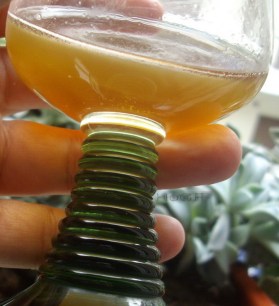Behind this fish -soup there is a long history of fear and courage.
Because, in the ancient thought the sea was a hostile, lonely world with sea monsters and fishes which were frightening to humans…. the only animal eaten in eastern Mediterranean that could eat people. Dolphins were an exception of course.
Scylla. Apulian vase. 4th cent. BC
Such negative feeling had a profound effect on visual arts and literature.
“Lie there among the fishes” says Achilles, having thrown the body of his fallen enemy into the river, ” who will lick the blood from your wound and gloat over it; your mother shall not lay you on any bier to mourn you, but the eddies of Scamander shall bear you into the broad bosom of the sea. There shall the fishes feed on the fat of Lycaon as they dart under the dark ripple of the waters…” (Homer Iliad 21.122-7. trans. Butler S. )
“Under the dark ripple of the waters” was a place of death, where drowned mariners were devoured by fish. Moreover, fish was considered a threat not only to humans but also to weaker sea-creatures, including fishes …. the only animal that eat each other. “Among fishes neither justice is of any account nor is there any mercy or love, for all the fish that swim are bitter enemies to each other. The stronger ever devours the weaker; this against that swims fraught with doom and one for another furnishes food. Some overpower the weaker by force of jaws and strength; others have venemous mouths; others have spines wherewith to defend them with deadly blows.” ( 177-180 AD, Oppian, On fishing, 2.43-50, trans. Mair)
Behind this soup there is a long history of poverty.
Fishermen. Phylakopi III, 16th ca. BC. Milos Island.
Being fisherman implied that land was so poor that could not feed its inhabitants. In Greek literature fishermen suffer from poverty, hard life and very low social status. Dedications and epigrams bring before us their hambler life in their thatched huts or out at the sea.
Hard is the life the weary fisher finds
Who trusts his floating mansion to the winds ;
Whose daily food the fickle sea maintains.
Unchanging labour and uncertain gains.
Moschus 169 (2nd cent. BC. Collections from the Greek anthology. Robert Bland, 1813)
However, it seems that fishermen who supplied the market and rich people with quality sea-food had the opportunities for enrichment.
Flatfish Painter, Apulian red-figured fish plate ca. 350–325 BC. (commons.wikimedia.org/wiki/File:Fish_plate_Louvre_K590.jpg)
Because, quality fish was very expensive, a luxurious delicacy, a symbol of wealth. During all periods of antiquity, the great value of fish as a wealth symbol was equally opposed to the stereotype of fisherman’s poverty.
Behind this soup there is a long history of technology and commerce.
The ancient fishermen might had an abundant catch only few times a year, however imagine that the Aegean fishermen of 10,000 years ago were able to catch 50-200 kg tuna in open water. But the fish is perishable. Hence, as fishing technology became more and more efficient, technologies of preservation of fish and commerce were developed too.
Fishermen did provide not only a staple element but also a significant factor in the ancient economy.
The thick fish soup (Pichti Psarosoupa, Πηχτή Ψαρόσουπα)
1 kg fresh cod
1 large onion, peeled
2 tomatoes
6 carrots, peeled
1 cup of celery, chopped
3/4 cup of celery root, peeled and halved
1/2 kg. potatoes, peeled and halved
6 small zucchinis
1/3 cup of Arborio rice or Greek Karolina
2 tbs virgin olive oil + some more
lemon juice
4 lemon halves
salt, to taste
freshly ground black pepper
Put fish, onions and tomatoes in a pot with enough water to cover them and bring to boil. Add salt to taste. When the fish is ready strain it through a strainer, debone it and set it aside. Add zucchinis, carrots celery, root, potatoes and olive oil and cook until tender. When they are ready strain them. In a blender puree a third of the vegetables and a third of fish meat. Set aside. Pur the rice into the broth and cook. When it is almost done add the puree and cook for 1-2 minutes. Serve the soup in bowls, season with pepper and sprinkle with lemon juice.
Serve fish and vegetables on a platter, drizzle them with olive oil, sprinkle with salt and pepper and serve with lemon halves on the side.
Or put some fish and vegetables in individuals bowls and laddle over the soup.











